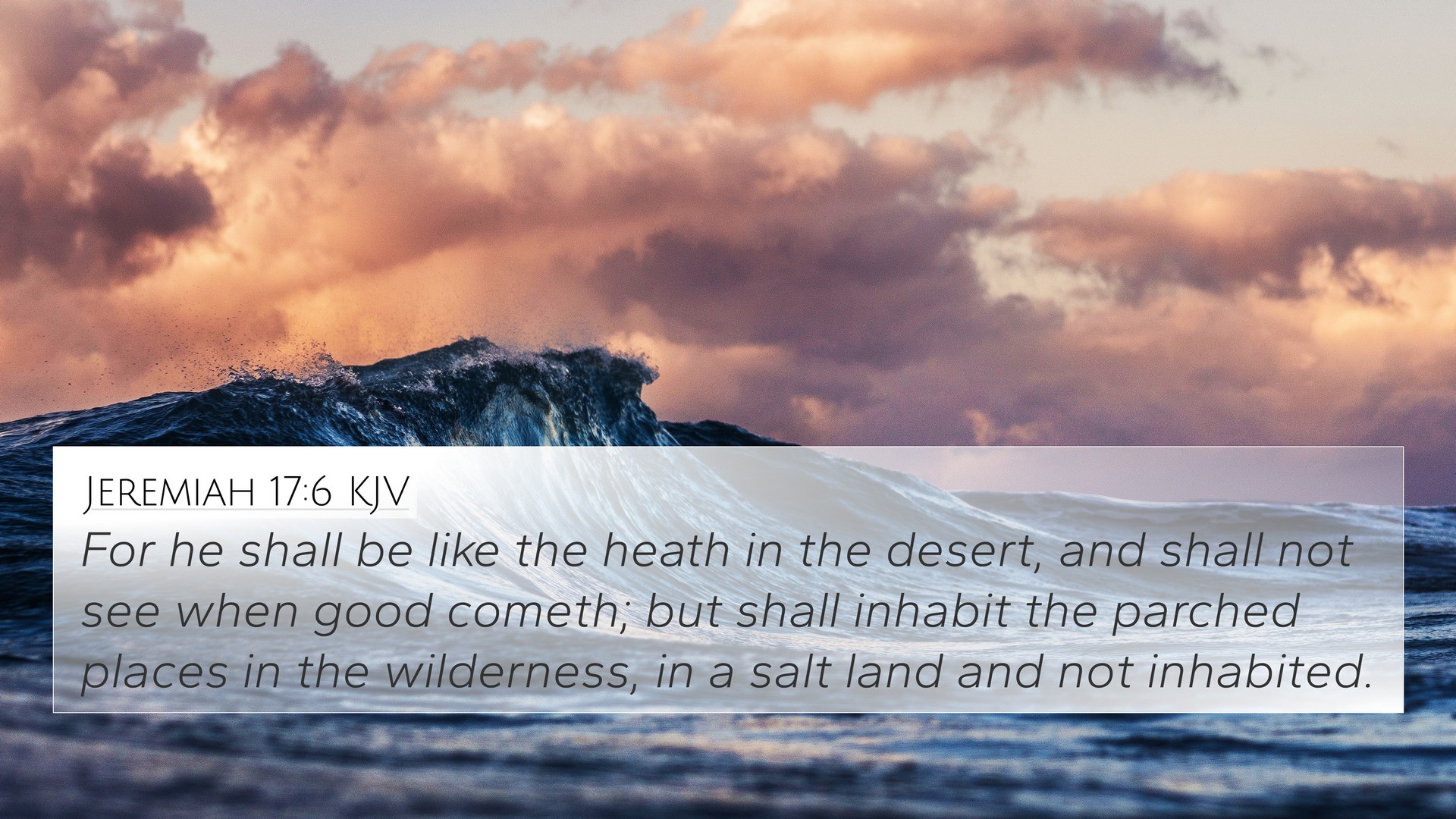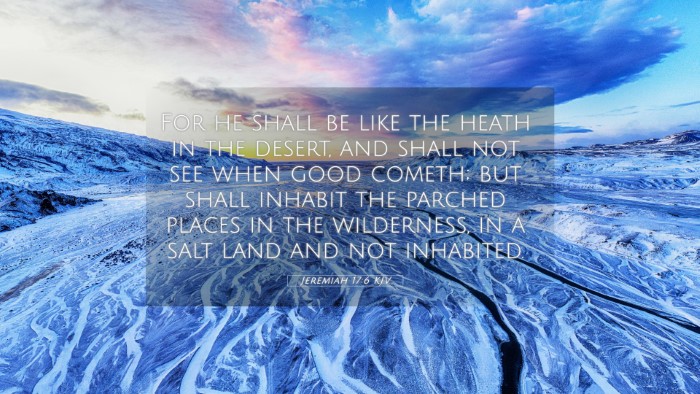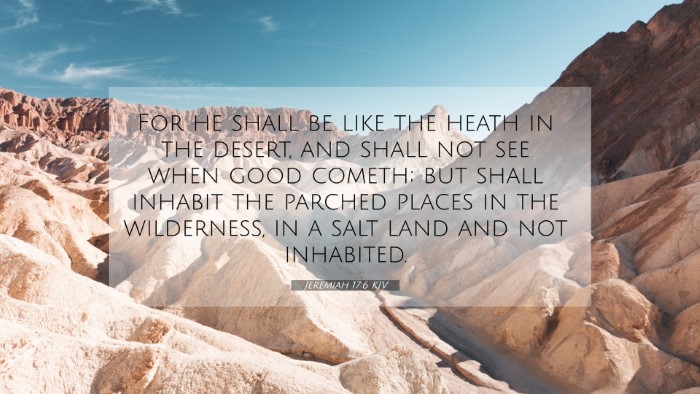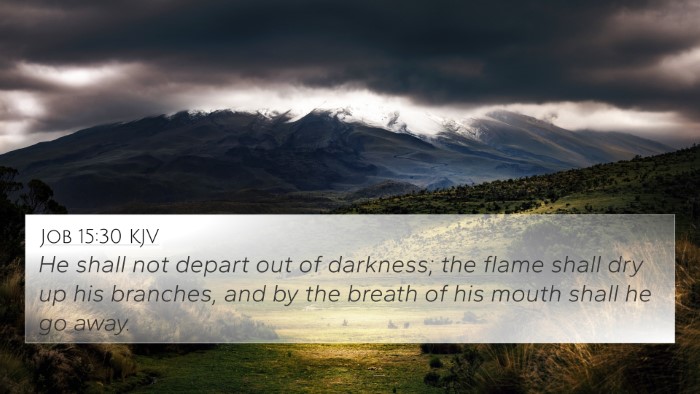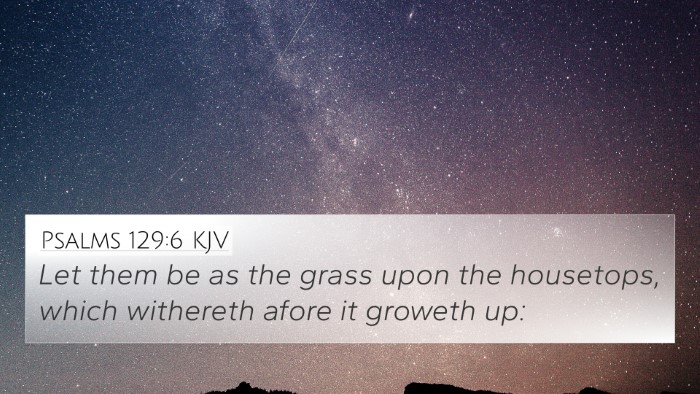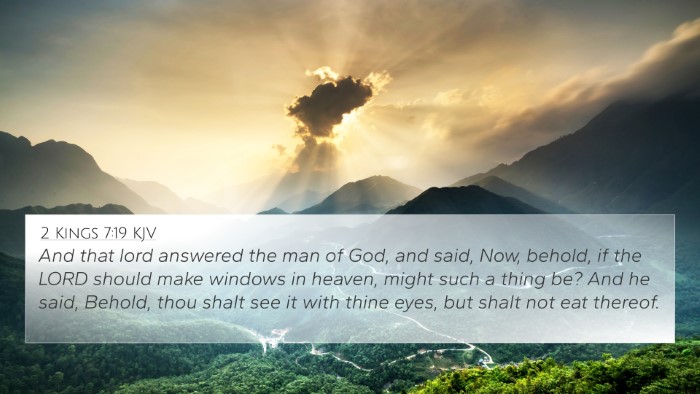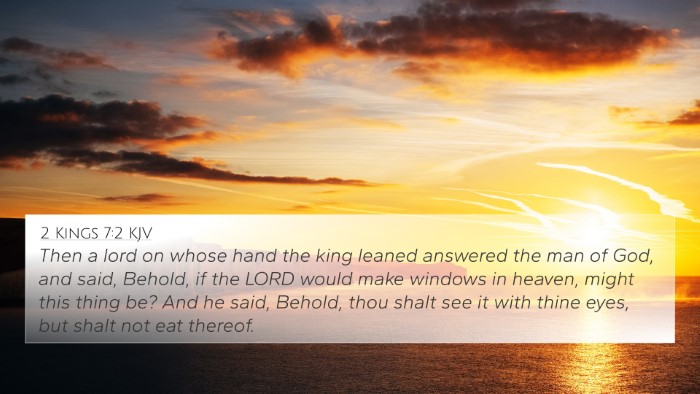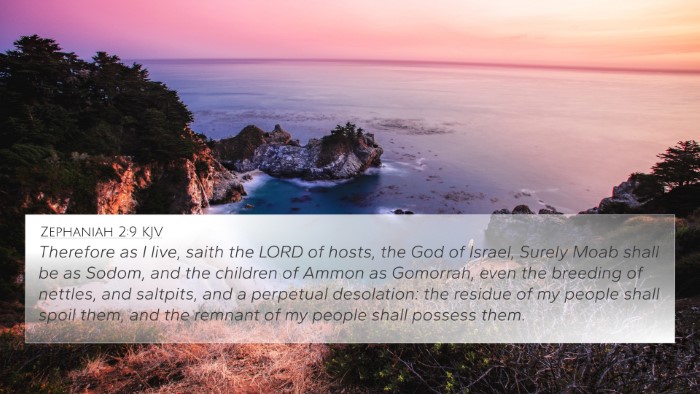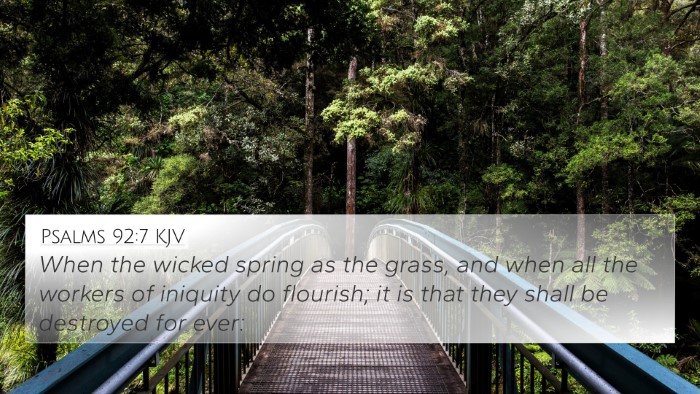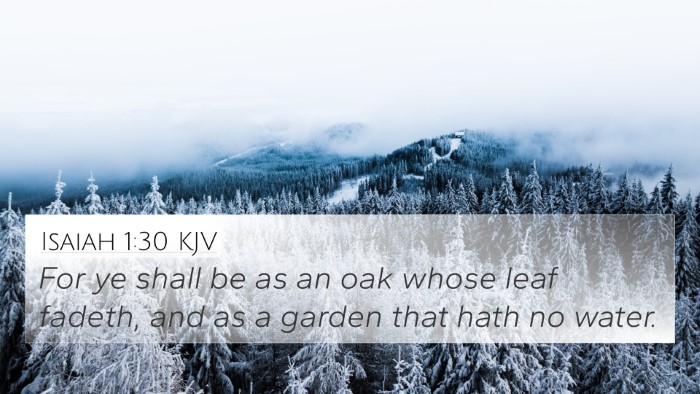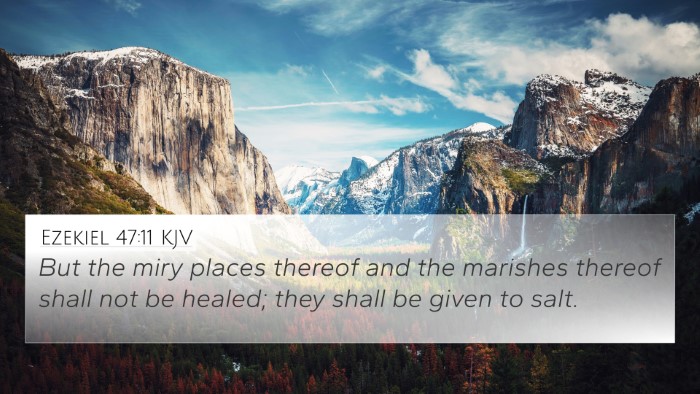Understanding Jeremiah 17:6
Jeremiah 17:6 states, "For he shall be like the shrub in the desert, and shall not see when good comes; but shall inhabit the parched places in the wilderness, in a salt land and not inhabited." This verse speaks profoundly about the state of those who turn away from God, rooted in a rich tapestry of biblical theology.
Contextual Meaning
This verse is set within the prophetic ministry of Jeremiah, addressing the waywardness of the people of Judah. The stark imagery of a shrub in a desolate environment serves as a metaphor for spiritual barrenness resulting from a lack of trust in God.
Commentary Insights
- Matthew Henry: He emphasizes that the shrub represents a person devoid of faith, highlighting how such individuals will not benefit from the blessings of God and will suffer in desolation.
- Albert Barnes: Barnes notes the conditionality of God’s blessings and how turning away leads to a life filled with hardship, likening it to a plant struggling for nourishment in a barren land.
- Adam Clarke: Clarke draws attention to the parched and unsatisfactory state of one who does not seek God, showing that true flourishing comes only when one is rooted in the Lord.
Thematic Connections
This verse interlinks with various themes found throughout the Bible, showing contrasting states of being based on one’s relationship with God. The notion of spiritual drought can be seen when comparing:
- Psalms 1:3: "And he shall be like a tree planted by the rivers of water, that bringeth forth his fruit in his season." This emphasizes the blessings of those who delight in God's law.
- Isaiah 58:11: “And the LORD shall guide thee continually, and satisfy thy soul in drought.” Here, the promise of divine guidance and provision is juxtaposed against the desolation of turning away from God.
- John 15:5: "I am the vine, ye are the branches: He that abideth in me, and I in him, the same bringeth forth much fruit: for without me ye can do nothing." This illustrates the essential connection to God for spiritual vitality.
- Proverbs 3:5-6: “Trust in the LORD with all thine heart; and lean not unto thine own understanding…” This highlights the reliance on God's wisdom over personal understanding.
- James 1:8: “A double-minded man is unstable in all his ways.” This connects to the instability of those who do not fully trust in God.
- Matthew 6:33: “But seek ye first the kingdom of God, and his righteousness; and all these things shall be added unto you.” Reinforcing the idea that prioritizing God leads to fulfillment.
- Revelation 22:17: “And let him that is athirst come…” A call to seek God's refreshment, contrasting the barrenness of the unfaithful.
Cross-References and Connections
An understanding of Jeremiah 17:6 can be expanded through cross-referencing, revealing a pattern throughout scripture that addresses dependence on God. Some of the key cross-references include:
- Nahum 1:3: "The LORD is slow to anger, and great in power, and will not at all acquit the wicked." Reflects the consequences of turning away from God.
- Mark 4:6: “But when the sun was up, it was scorched; and because it had no root, it withered away.” This illustrates the fleeting nature of faith without deep roots.
- 2 Peter 2:20-22: Warns about returning to folly after experiencing knowledge of the truth, reinforcing the desolate state of the unrepentant.
Conclusion
Jeremiah 17:6 acts as a solemn reminder of the spiritual consequences of forsaking God. The cross-references and thematic connections portray a comprehensive biblical worldview, underscoring the importance of steadfast faith. For anyone engaging in Bible verse cross-references or thematic Bible verse connections, this verse serves as a critical point of reflection on the blessings of faith versus the desolation of disbelief. Understanding such Bible verse parallels enhances our grasp of God’s intentions throughout Scripture.
Tools for Further Study
For those wishing to delve deeper into Bible cross-referencing, several tools and methods can enhance Bible study:
- Utilizing a Bible concordance to find related passages.
- Employing a Bible cross-reference guide for structured study.
- Incorporating Bible reference resources for thematic exploration.
- Engaging in cross-reference Bible study methods to identify connections across the text.
